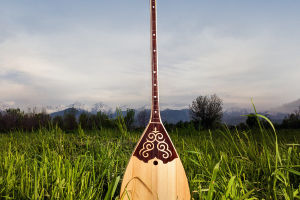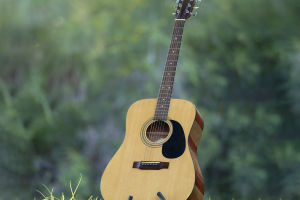The lute, a stringed instrument with a rich history, has captivated musicians and audiences alike for centuries.
Its distinctive, resonant sound and elegant design have made it a symbol of musical sophistication and cultural heritage.
From its origins in ancient civilizations to its revival in modern times, the lute's story is a fascinating journey through the evolution of music and society.
Origins and Early History
The lute's origins can be traced back to ancient Mesopotamia, where early versions of the instrument were depicted in artwork dating as far back as 3000 BCE. These early lutes were simple, with a small body and a few strings, but they laid the foundation for the instrument's development over the millennia. The lute spread across the Middle East, North Africa, and into Europe, evolving in design and construction as it moved through different cultures.
One of the most significant periods in the lute's history was during the Golden Age (8th to 14th centuries), when it became a central instrument in the musical traditions of the Arab world. Known as the oud, this version of the lute had a larger body and more strings, and it played a key role in the development of Middle Eastern music. The oud's influence spread to Europe through Spain, where it became a precursor to the European lute.
The Renaissance and the Golden Age of the Lute
The lute reached the height of its popularity during the Renaissance (14th to 17th centuries) in Europe. This period, known as the Golden Age of the lute, saw the instrument become an essential part of both courtly and popular music. Lutenists, or lute players, were highly regarded, and the instrument was often depicted in paintings and literature as a symbol of refinement and artistic expression.
During this time, the lute's design became more elaborate. It typically had a pear-shaped body, a flat back, and a varying number of strings, usually between 6 and 24 courses (pairs of strings). The lute was used in a wide range of musical contexts, from solo performances to ensembles, and it was a favorite instrument for accompanying vocal music.
One of the most renowned lutenists of the Renaissance was John Dowland (1563-1626), an English composer and performer whose works for the lute are still celebrated today. Dowland's music, characterized by its intricate melodies and expressive harmonies, exemplifies the lute's ability to convey deep emotion and technical brilliance.
Decline and Modern Revival
The lute's popularity began to decline in the 18th century as other instruments, such as the harpsichord and later the piano, came to the forefront of Western music. By the 19th century, the lute had largely fallen out of favor, and its presence in the musical world was greatly diminished.
However, the 20th century saw a revival of interest in the lute, driven by the early music movement, which sought to rediscover and perform music from historical periods using period-appropriate instruments. Pioneering musicians and scholars, such as Julian Bream and Paul O'Dette, played a crucial role in bringing the lute back into the spotlight. Their efforts to reconstruct historical playing techniques and repertoire have allowed modern audiences to experience the beauty of the lute's sound.
The Lute Today
Today, the lute enjoys a renewed appreciation among musicians and audiences who value its unique timbre and historical significance. Contemporary lutenists continue to explore both the traditional repertoire and new compositions, expanding the instrument's role in the modern musical landscape.
The lute's versatility is one of its greatest strengths. It can produce a wide range of tones, from soft and delicate to rich and powerful, making it suitable for various musical styles. Its intimate sound is particularly well-suited to solo performances and chamber music, where its subtle nuances can be fully appreciated.
Moreover, the lute's aesthetic appeal is undeniable. The craftsmanship involved in making a lute is a testament to the artistry and skill of luthiers, who use fine woods and intricate inlays to create instruments that are as beautiful to look at as they are to hear.
The lute's enduring charm lies in its ability to connect us with the past while remaining relevant in the present. Its journey from ancient Mesopotamia to modern concert halls is a testament to its timeless appeal and cultural significance. Whether as a historical artifact or a living instrument, the lute continues to inspire and enchant, proving that its place in the world of music is as vital today as it was centuries ago.


